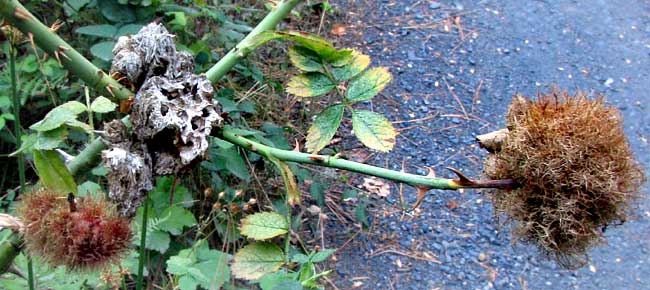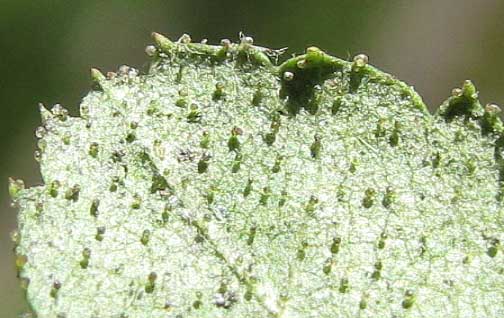Excerpts from Jim Conrad's
Naturalist Newsletter

from the the October 4, 2009 Newsletter, issued from the Siskiyou Mountains west of Grants Pass, Oregon:
SWEETBRIER ROSE
Jepson's Flora of California, the most useful flora for southern Oregon, lists eleven "wild rose" species. Of those eleven species, nine are native and two are invasive. It happens that the spines or prickles of the nine native species are slender and straight, with their bases not particularly enlarged. The two invasive species' spines, however, are curved backward and are very thick-based, or catclaw-like. You can see above that the spines of the bush infested with Mossy Rose Galls are very thick-based and recurved, so it's a "weedy species." It's the Sweetbriar or Eglantine Rose, ROSA EGLANTERIA, native to Europe and western Asia. It's invasive all across the world, though, and coast-to-coast in North America.
During the summer ours produced fragrant, pink flowers but now it bears only the oblong, red hips shown below:

The second weedy, invasive rose species we have here, the Dog Rose, Rosa canina, is similar, but can be distinguished from the Sweetbriar Rose by a simple trick, or field mark, if you know it. That is, the leaves and sepals of the Sweetbrier Rose are "glandular" while on the Dog Rose they're "glandless." You can examine a leaflet underside of our plant below:

See those globular, transparent items, like dewdrops atop stubby little hairs? Those are stalked glands. The Sweetbrier Rose's sepals are similarly glandular. One supposes that the glands are sticky or contain chemicals making insects feel unwelcome there.